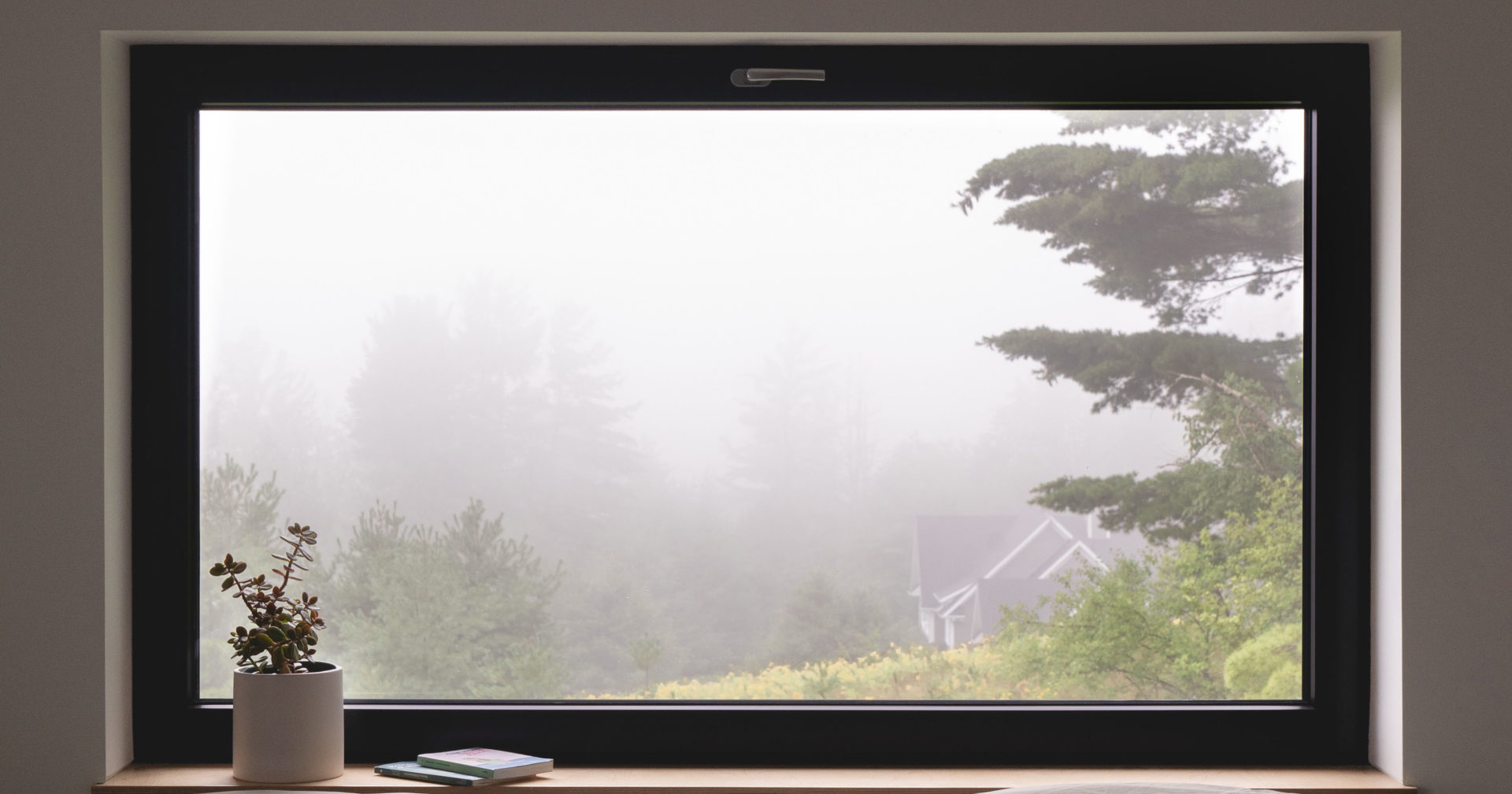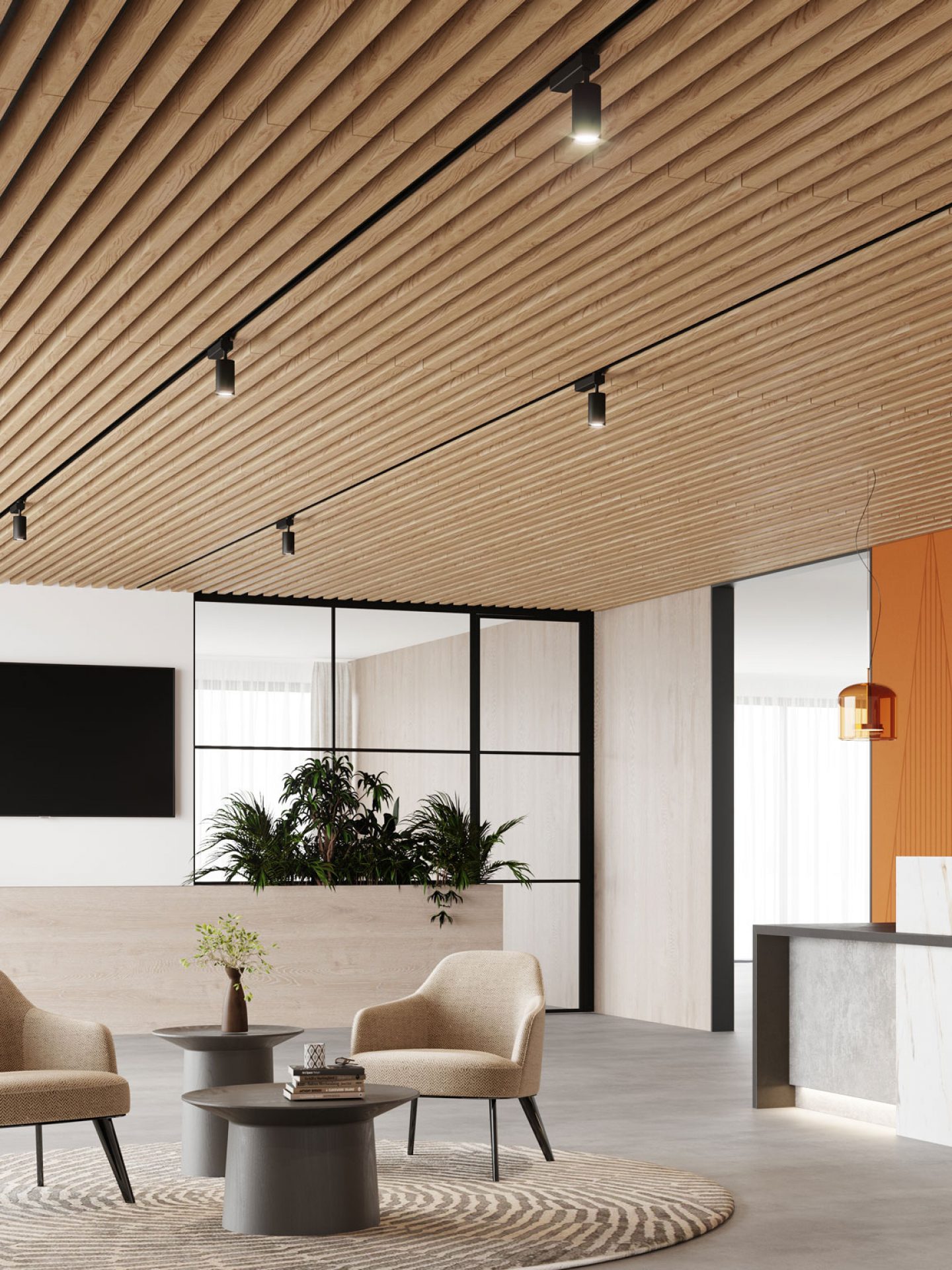The Main Entry Deadline for Architizer's 2025 A+Product Awards is Friday, December 6. Get your brand in front of the AEC industry’s most renowned designers by submitting today.
In today’s competitive real estate market, large square footage is hard to come by and highly-priced. Today, smaller square footage is the norm and when living in close quarters, dwellers often pay more attention to soundproofing their tight space. The soundproofing process is rather sophisticated and there are countless products on the market to choose from. From Feltouch’s Make Up Divider panels that soften acoustics, Acoufelt’s SoftenUp Ceiling System that is aesthetically pronounced and softens interior acoustics to TURF Design’s Scanlines acoustic wall panels that double as decoration and noise-control, soundproofing options are abundant. What is more, all pay close attention to the four soundproofing elements: decoupling (vibration), absorption (air), mass (weight) and damping.
However, seeking professional help and investing in high-end products is a large investment and oftentimes off-the-table for those renting or on a budget. Thankfully, there are many inexpensive DIY solutions to help muffle sound, decrease vibration and ultimately, create a more enjoyable living environment. Listed below are six measures that will help keep out noise, keep in sound and improve a room’s overall acoustics.

Make Up Divider acoustic panels by Feltouch
1. Rearrange the Furniture and Add Mass to Walls
Rearranging furniture is a simple and inexpensive tool to improve the room’s sound quality. Placing heavy furniture, such as bookcases and large shelves, against walls can help block out unwanted sound. When a substantial mass is placed against a wall, it resists vibrations coming from surrounding rooms and thus reduces sound. This technique won’t completely eliminate sound but will certainly reduce bothersome noise.
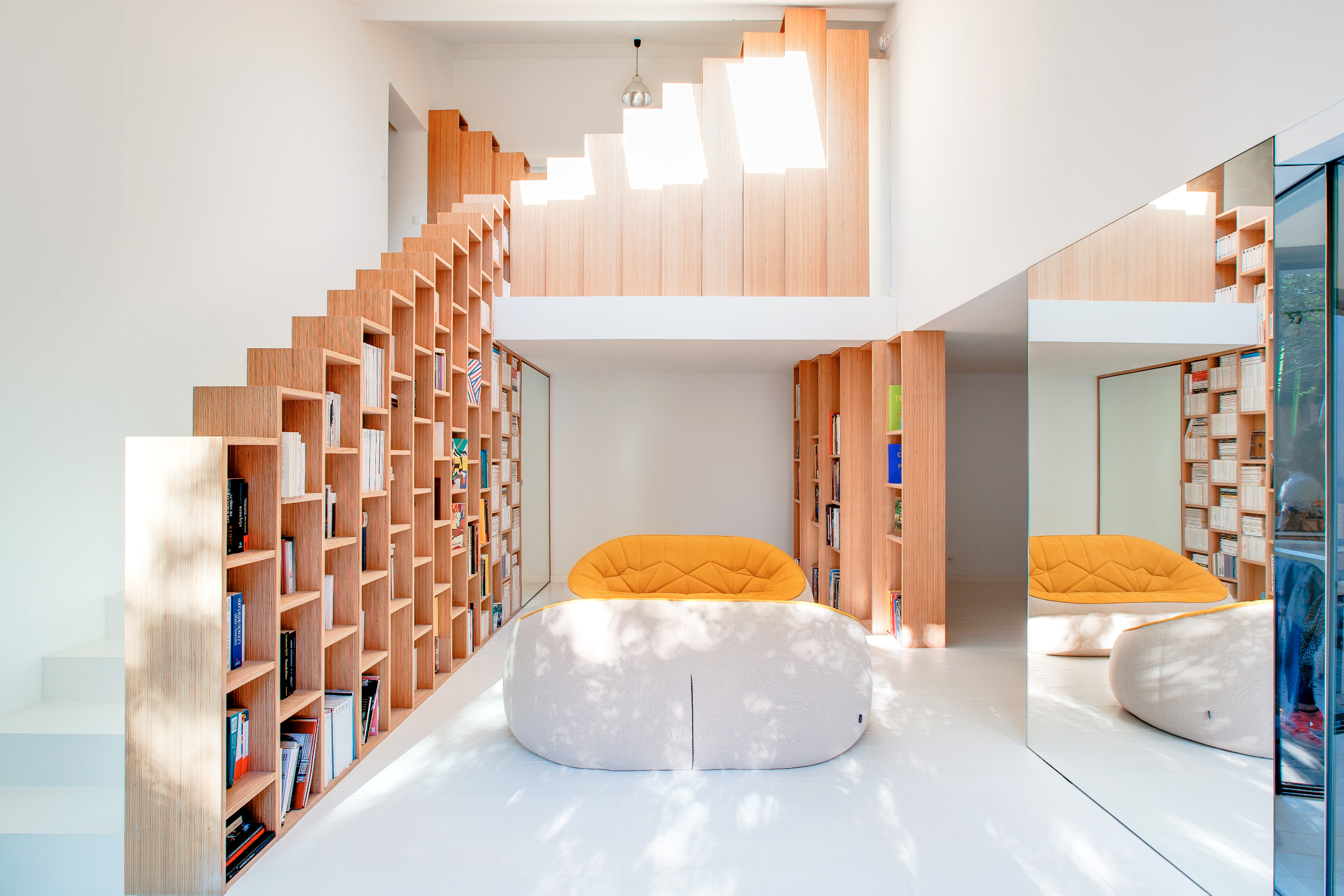
Bookshelf House by Andrea Mosca Creative Studio, Paris, France, 2016
2. Choose Soft Furnishings
Sound is transmitted through vibrations and the more vibrations, the louder the noise. Hard objects vibrate more than soft objects, so when furnishing a noisy space, opting for pieces with soft materials can help limit sound vibration and reverberation. For example, tablecloths, cushions and upholstered pieces can help reduce vibration in a room, hence decreasing noise. The reduction of noise isn’t enormous, but neither is the effort it takes to add a few soft furnishings. Therefore, this technique is great for busy people who want to use what they have around the house and keep with their budget.
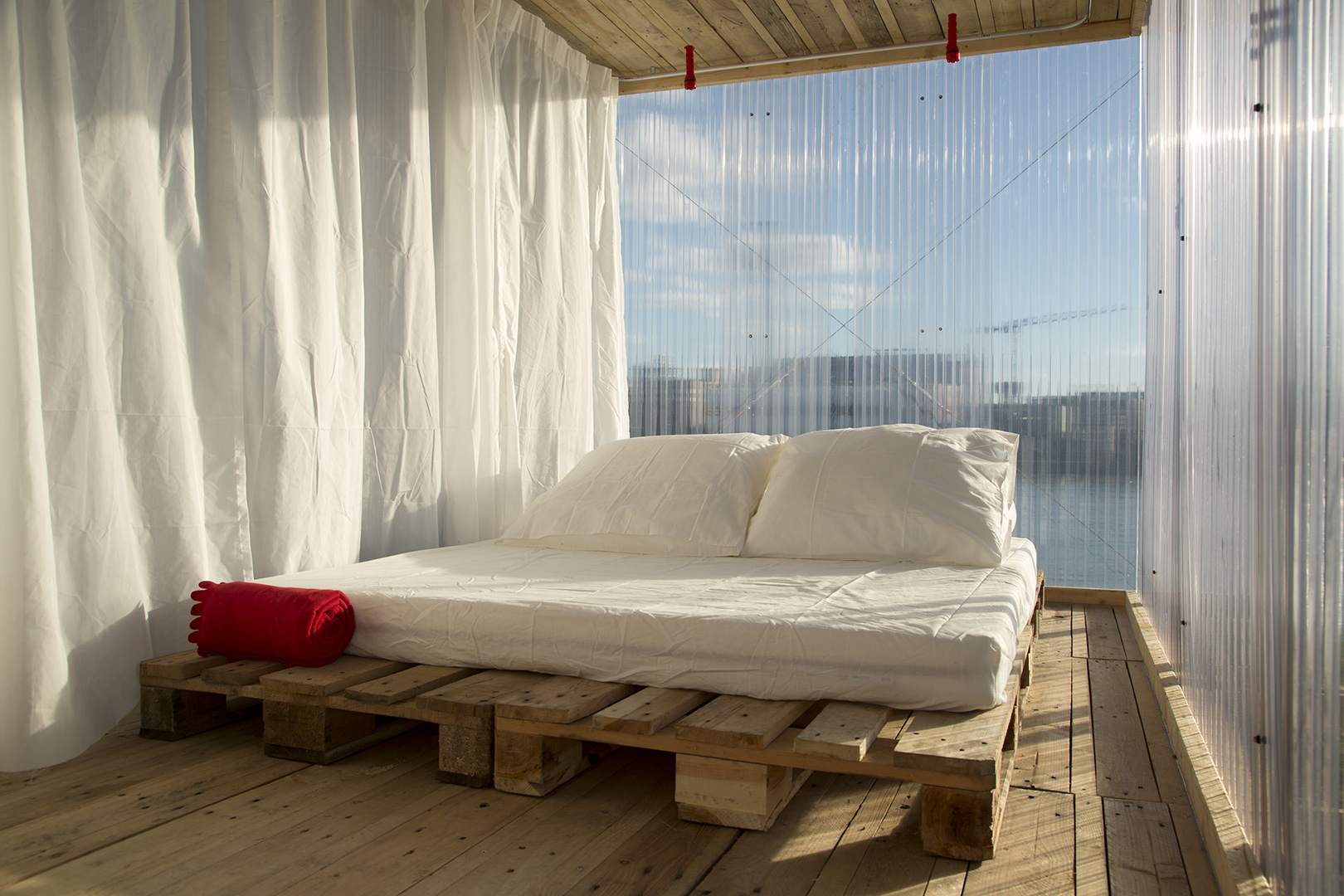
The Hedonist by Nuno Pimenta, Mannheim, Germany, 2014
3. Curtains and Blinds
Curtains are also a great way to block sound before it gets the chance to vibrate off hard surfaces. Whether it be a curtain or blind, covering apertures can help reduce the echo and reverb in a room. Equally, there are many soundproofing curtains on the market that work to trap internal sound rather than block out exterior noise. Therefore, soundproofing curtains are great if the goal is to create privacy.
4. Rugs, Carpets and Soundproofing Mats
Similarly to adding wall mass, it’s important to address the floor. Rugs and carpets are an easy solution to eliminating the sound of footsteps and pronounced movement. Using thick rugs or even layering carpets can be very effective in muffling noise. Moreover, adding a rug underlay can increase thickness and help absorb echoes. Soundproofing mats are also something to consider depending on the function of the room.
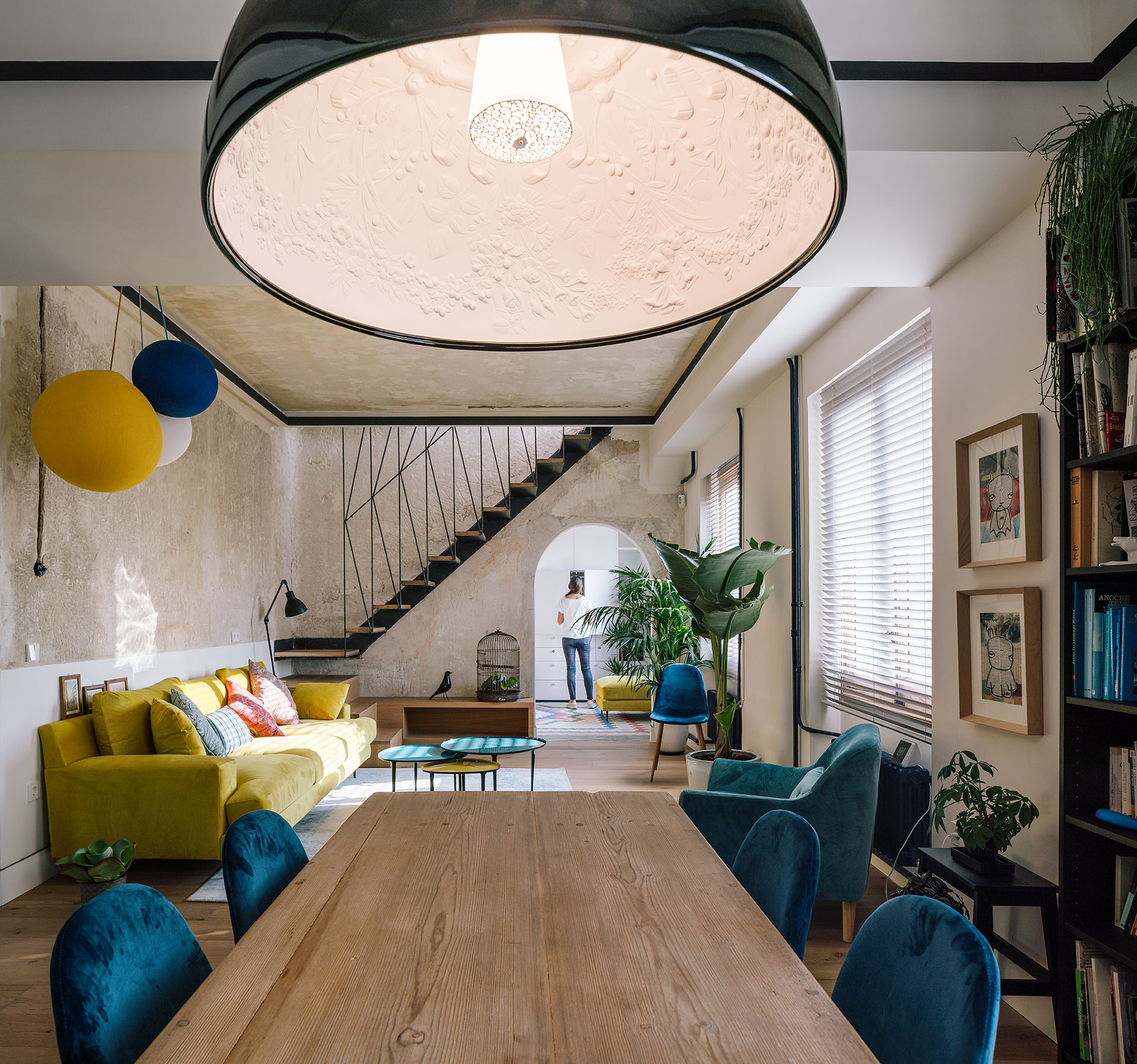
HOME^DOME by idoia otegui_i!arquitectura, Madrid, Spain, 2019
5. Decorate Your Space with Wall Art
Another simple and aesthetically pleasing way to tackle noise is to decorate the space! Think canvas paintings and tapestries. This is a cost-effective and effortless way to muffle sound while simultaneously decorating a room. This technique won’t block out sound but can help reduce the echo in a room.
6. Tape Your Windows and Sweep Your Doors
One of the most challenging spots to soundproof is windows. If there’s a gap between the window and window frame (often caused by a worn-out seal), noise will travel regardless if the window is shut. One way to easily tackle this issue is to use weatherstripping tape. All it takes is replacing the old weatherstripping tape with the new one. This will help insulate openings and keep out exterior sound. Additionally, adding a door sweep to the bottom of a door will seal the opening and help keep out sound.
These six soundproofing solutions are ideal for those renting, residing in non-permanent housing situations or on a tight budget. They are easy to install, inexpensive and will aid in blocking out the undesired noise of a loud neighbor or roommate. All it takes is a little time, patience and creativity to soundproof a space!
The Main Entry Deadline for Architizer's 2025 A+Product Awards is Friday, December 6. Get your brand in front of the AEC industry’s most renowned designers by submitting today.
